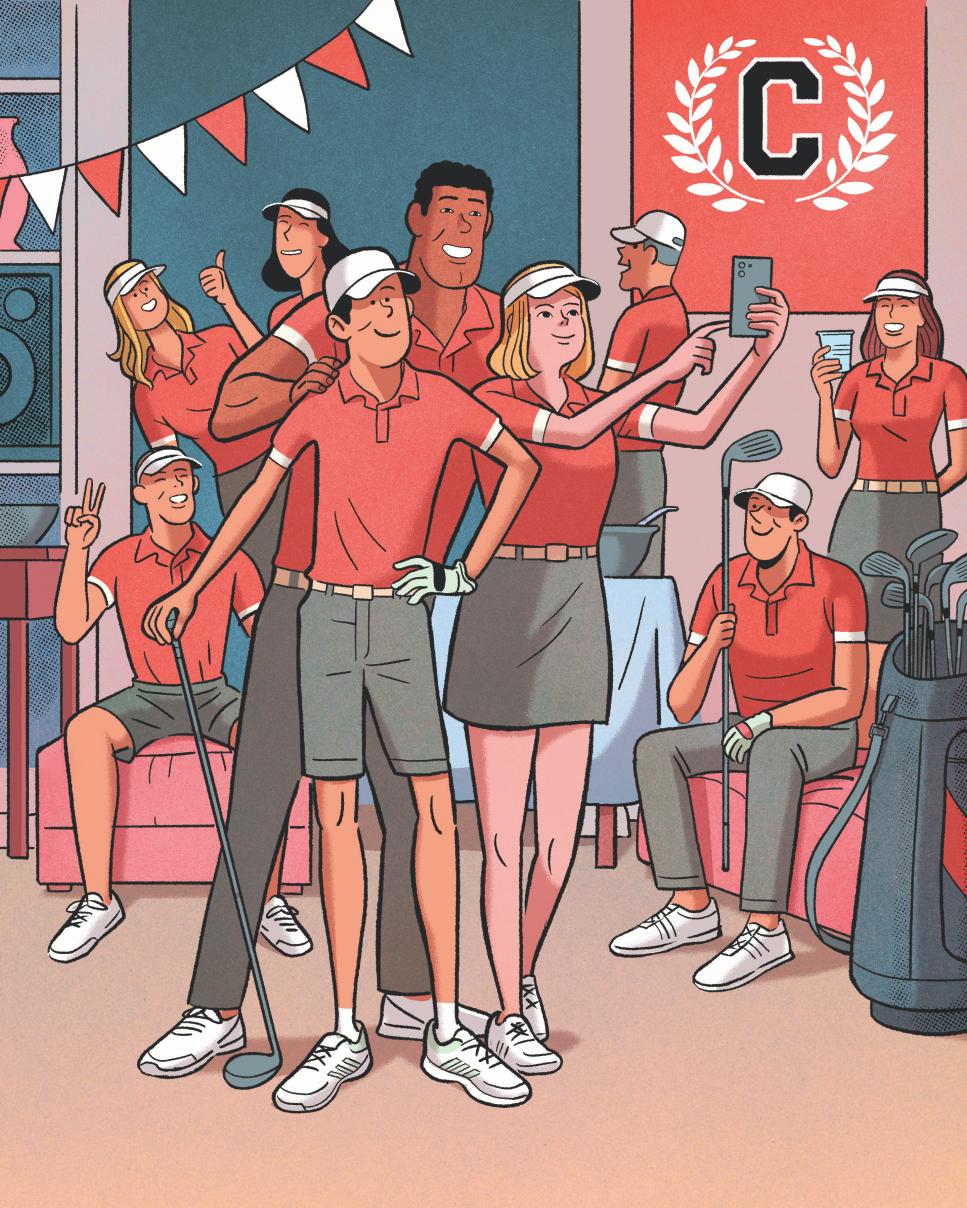How do you really know if you have what it takes to play in college?
Junior Golf Hub is an educational resource and online community for kids, their parents and college coaches. It recently conducted a study of 900 junior golfers who signed a National Letter of Intent. Across all collegiate divisions (DI, DII, DIII, NAIA and NJCAA), the study found that the scoring average for boys was 73 to 78. For girls, the average was 76 to 85. Mind you, for many coaches, a scoring average comprises results from multiround local amateur and state golf association events, not high school or country club tournaments. If this sounds intimidating, Rick Dowling, the general manager of Junior Golf Hub, says to relax. “If you’re a boy and you can break 90, you’ll have opportunities,” he says. “For girls, I would say it’s similar, maybe breaking 100.” The key is finding a program where your scoring average is comparable to those of current players. Schools with smaller enrollments in areas not known for golf have teams they want to build. However, remember that college tournaments are played on tougher courses from longer yardages with more difficult setups.
“Potential recruits will look at scores from tournaments, and they’ll see college players shooting 72 or 75 and say, ‘Boy, I can do that,’ ” says Josh Hillman, head coach of the Williams College men’s golf team. “Maybe they can do that in the middle of the summer when they’re playing golf every day in good conditions, but when you get to September and October in the Northeast, you should factor in wind, temperatures dropping, chilly rain and how the ball reacts to these elements. A 74 in the fall is like a 70 or 69 mid-summer.”
Being realistic is just as critical as playing in the right events. When setting your summer schedule in high school, choose at least two multi-day events, and give yourself time to play in a few small events leading up to bigger tournaments. Most coaches are looking for juniors with a thoughtful, well-organized schedule that progresses like a college season. “A misconception is that you have to spend a lot of money traveling to find the best players to compete against,” says Anne Walker, head coach of Stanford University’s women’s golf team. “One of the cool things about golf is that you’re just playing the course. If you tee it up in a field that’s maybe not as strong, that’s fine, but then go beat that field by 15. Coaches will notice that.”
Hillman likes it when potential recruits have a tournament schedule with a “big picture” because it demonstrates goal-setting abilities and work ethic, which are among the intangibles that can encourage a coach to look past higher scores.
“That’s what recruiting and evaluation is for,” says Scott Limbaugh, the men’s coach at Vanderbilt University. “You might see players with speed, but they’re like a wild horse. They’re not disciplined. They don’t know how to flight their ball. They don’t know how to miss on the correct side. They don’t know a lot of the little things, but they’re not huge things. Often it doesn’t take long. You get around the coaches and other really good players, and you just skyrocket.”
Coaches look at launch-monitor data and swing-speed numbers to gauge a junior’s potential. Depending on the level of competition, college coaches are looking for male players with driver swing speeds of 105 to 115 miles per hour or more and female players with speeds of 95 to 105 mph. Coaches might also be curious about your athletic history beyond golf, particularly in team sports, because it usually means you are coachable and will transition well to college golf. “I like multisport athletes,” says Emily Glaser, head coach of the University of Florida’s women’s team. “They have the attributes that make for good team players and have been involved in something that’s bigger than them.”
‘IF YOU DON’T HAVE THE RESOLVE AND PASSION THAT IT TAKES TO PLAY AT THE NEXT LEVEL, COACHES WILL SEE THAT.’
Matt Thurmond, head coach of Arizona State’s men’s golf team, says he can intuit a lot from a player’s body language during a round. “You can tell by the way they talk and carry themselves that they believe in themselves and that they’re going to do what it takes to get where they want to go. I want guys who are competitors, who believe in themselves, and who know how to win regardless of the resources.”
Kelley Hester, head coach of Clemson University’s women’s golf team, says she likes to see players who can overcome adversity, whether it’s on the course or off. College golfers travel a lot, usually missing the most classes of all athletes, so they must be tough enough to handle that kind of stress and have the drive and responsibility to stay on top of their studies.
An effective way to demonstrate the passion and commitment coaches want is to make it clear you have done research on the school, the coaching staff and the golf team. “It means a lot when you can tell that your school is their No. 1 choice,” says Julie Garner, head coach of the Rollins College women’s golf team.
While researching schools, know that most college golf teams have eliminated walk-ons. Many players believe they’ll have the chance to try out if they can’t find a school that’s a good fit, but this isn’t necessarily the case. If there are walk-ons, they are often preferred walk-ons that were recruited.
Ultimately, having determination is something that cannot be taught, and it might be the most important quality to have as a college golfer. There are plenty of steps you can take in high school to improve your game, but if you don’t have the resolve and passion that it takes to play at the next level, coaches will see that.









